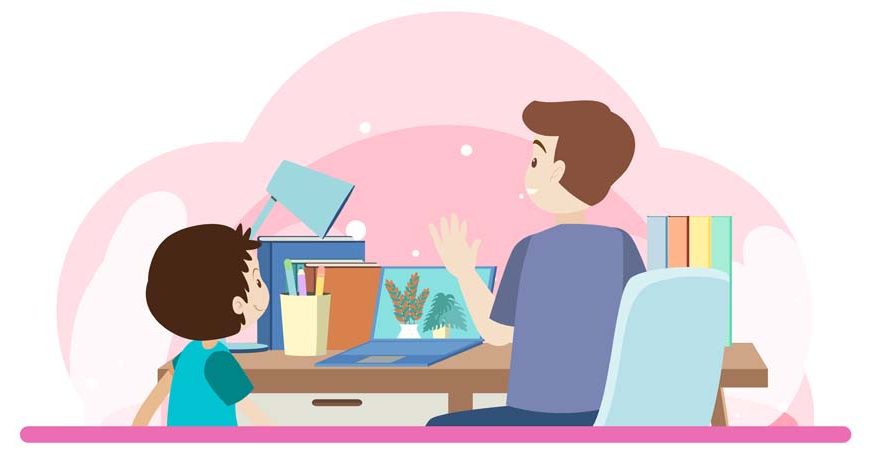Digital Storytelling for Children
The twenty-first century has redefined storytelling, merging traditional oral narratives with the digital world’s interactive possibilities. Digital storytelling, a concept that combines technology’s strengths with creative communication, is transforming the landscape of learning for children.
What is Digital Storytelling?
Simply put, digital storytelling is the practice of using digital media to narrate stories. This modern form of communication encompasses an array of digital multimedia, such as images, audio, video, and web publishing. Rather than just listening to or reading a story, digital storytelling allows children to explore narratives in an immersive, interactive setting.
Digital storytelling transforms traditional storytelling by integrating technological features that enhance the narrative’s interactivity. It becomes a vibrant method of conveying information, emotions, and perspectives, encouraging children to participate actively, thereby making learning more engaging and relatable.
Digital Storytelling Formats
The evolution of technology has brought forth multiple digital storytelling formats. Here are some of the prevalent formats:
E-books: Electronic books or e-books, often embedded with audio-visual elements, provide an interactive reading experience to children. Readers can click on words to learn their pronunciation or definitions and interact with digital elements in the story.
Animations: With this format, stories come alive through animated characters and backgrounds. Many animation platforms allow children to create their own stories, fostering creativity and engagement.
Video Stories: These involve recording videos that tell a story. They can include puppet shows, dramatic plays, or even narrations with relevant images and text.
Interactive Games: Interactive games turn the storytelling experience into a hands-on activity. Here, children can influence the storyline by making decisions for the characters, thereby becoming an integral part of the narrative journey.
Objectives of Storytelling
Understanding the objectives of storytelling is essential to appreciate the value of digital storytelling. Firstly, storytelling is about sharing and interpreting experiences. It allows us to understand the world around us and empathise with diverse perspectives.
Secondly, one of the objectives of storytelling is to educate. Stories can illustrate complex concepts in a simplified, engaging manner. They are instrumental in teaching moral values and cultural awareness to children.
Lastly, storytelling aims to entertain. It is an age-old form of entertainment that stimulates imagination and fuels creativity.
Digital storytelling effectively meets these objectives by enhancing interactivity, improving understanding, and increasing retention, making learning a more enjoyable experience for children.
The Importance of Digital Storytelling for Children
Digital storytelling has emerged as a vital tool in modern education and childhood development, making significant contributions to children’s learning journey. This shift from conventional narratives to interactive digital stories has multiple benefits, shaping not just the children’s education but their overall development.
Enhancing Engagement and Comprehension
The traditional way of storytelling, while effective, often makes children passive listeners. In contrast, digital storytelling transforms them into active participants. The interactivity embedded within the story—like clickable links, visual and auditory enhancements—engages children and helps them better understand the storyline and the concepts embedded in it. This interactive engagement makes learning a fun-filled process and encourages children to participate more enthusiastically.
Boosting Creativity and Critical Thinking
Digital storytelling is not limited to just consuming stories; children can become creators too. Several platforms allow kids to construct their narratives, select characters, and decide the storyline. This creative freedom boosts their imaginative skills, artistic expression, and even problem-solving abilities. For instance, in an interactive game-style story, children may need to make choices for characters that can alter the storyline, promoting critical thinking.
Improving Technological Literacy
In an increasingly digital world, becoming adept with technology is crucial. When children engage with digital storytelling platforms, they’re not just having fun or learning new concepts; they’re also developing their digital literacy. They learn to navigate different digital interfaces, understand the basics of multimedia, and may even pick up fundamental coding concepts. This tech-savviness can give them a head start in the digital future.
Fostering Empathy and Cultural Understanding
Digital storytelling often features diverse characters and settings, exposing children to various cultures, customs, and perspectives. By placing children into the shoes of characters with different backgrounds, digital stories can foster empathy and broaden their understanding of the world.
Enriching Language and Communication Skills
Lastly, digital storytelling helps in enriching children’s language and communication skills. Engaging with stories through different formats—reading, listening, watching—can expand their vocabulary, improve pronunciation, and enhance their grasp of language structure. Moreover, by creating their own stories, children also practise structuring their thoughts and expressing their ideas, which refines their communication skills.
Digital Storytelling Examples for Kids
Digital storytelling has opened new avenues for children’s education and entertainment. Here are a few examples:
BBC’s Interactive Stories: The British Broadcasting Corporation offers a variety of interactive stories that engage children in the narrative. With games and quizzes built into the story, children are actively involved in the narrative, learning as they enjoy the tale.
Storybird: This digital platform allows children to create their own stories using an array of images. It is a great example of digital storytelling that encourages children’s creativity and literacy skills.
Minecraft: The popular video game Minecraft allows children to build and explore their own worlds, crafting stories as they progress. It is an interactive game that merges storytelling with digital creativity.
The Future of Digital Storytelling for Children
The future of digital storytelling is bright, with possibilities of virtual and augmented reality technologies becoming mainstream. These technologies will make narratives more immersive, allowing children to virtually step into the story’s world. As digital storytelling continues to evolve, so does the way children learn, perceive, and create.
To summarise, digital storytelling harnesses the interactive potential of digital media to narrate stories, offering various digital storytelling formats like e-books, animations, video stories, and interactive games. Serving the objectives of storytelling – to share experiences, educate, and entertain, digital storytelling makes learning an engaging process for children. With examples like BBC’s Interactive Stories, Storybird, and Minecraft, the world of digital storytelling is a fascinating realm for children to explore and grow.
In essence, digital storytelling is not merely a mode of communication; it is a bridge connecting technology, creativity, and learning, reshaping the way children experience stories. It has the power to convert passive listeners into active participants.
At EuroKids, we believe in a similar ideology wherein our aim is to create an interactive learning atmosphere for the kids, and shaping a promising future for their education.
















